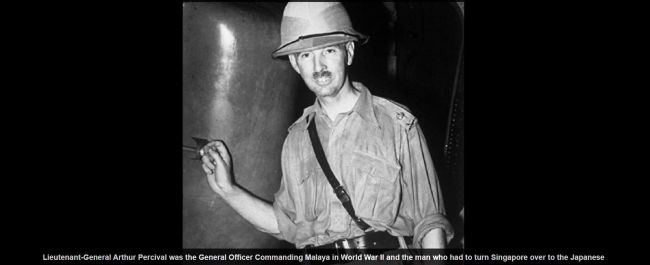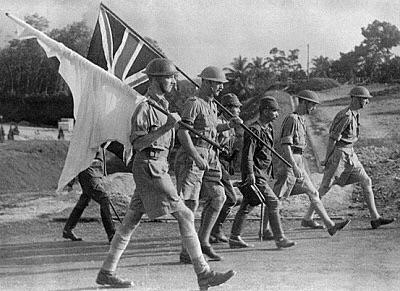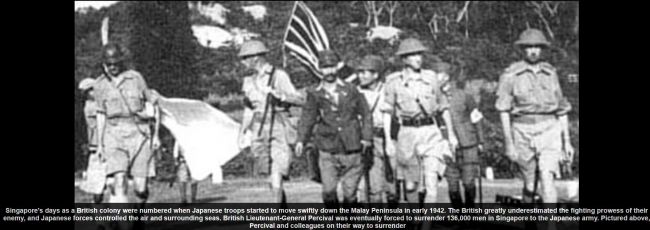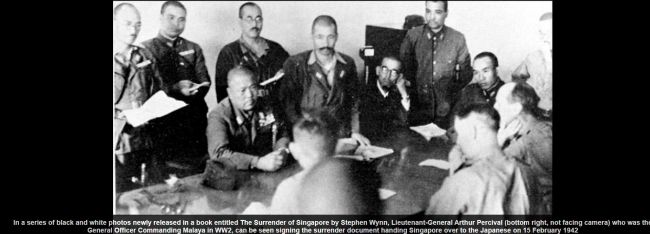| Irish Forums Message Discussion :: Pat Finucane Not The First victim of brit crown propaganda |
   | Irish Forums :: The Irish Message
Forums About Ireland and the Irish Community, For the Irish home and Abroad. Forums include- Irish Music, Irish History, The Irish Diaspora, Irish Culture, Irish Sports, Astrology, Mystic, Irish Ancestry, Genealogy, Irish Travel, Irish Reunited and Craic
|  
|
Pat Finucane Not The First victim of brit crown propaganda
 

|
|
|
| Irish
Author |
Pat Finucane Not The First victim of brit crown propaganda Sceala Irish Craic Forum Irish Message |
Finn

Location: Ireland
|
| Sceala Irish Craic Forum Discussion:
Pat Finucane Not The First victim of brit crown propaganda
|
|
|
Add to this later but I want to reference a few items here for a piece later.
The brehon, the ancient native Irish law makers were outlawed by foreign invader and put to the sword with no cover up or shame, so at least we know who killed them and why- The Norman system which evolved to a English feudal monarchy for greed power and money.
The ongoing evolving system that has robbed Ireland, used reasons to justify from such as barbarism when there was no religious difference and then religion when there was, have long been at the killing those that work against their laws.
But they got a lot more underhand and later were not even honest about their lust for power
A talk by Dr Brian Murphy OSB
Dr Murphy's lecture examining the operation and consequences of the British propaganda efforts during the Tan War started with an unambiguous statement about the conclusions of his research; that in addition to their contemporary political influence on the 1920s, they still influence historical accounts published ninety years later. Murphy claims that his examination of the historiography has revealed the over dependence of 'revisionist' historians - he named Roy Foster and Peter Hart in particular - on the 'official' version of events spun by Dublin Castle during the War.
A central function of the British propaganda efforts in the period under examination was the planting of stories in reputable journals which were supposedly from non-aligned sources. Murphy cited an article entitled 'Ireland under the New Terror, Living under Martial Law', which appeared in a popular London publication in the Summer of 1921. While purporting to be a series of travellers anecdotes from Ireland, it presented the IRA in a far less favourable light than the British forces. However it was not revealed that the writer, Ernest Dowdall, was in fact member of the RIC Auxiliary and the article was directly planted by the Propaganda Department in Dublin Castle to influence public opinion.
The main focus of British propaganda efforts was concentrated in the final year of the War, from the summer of 1920 until the Truce in July 1921. Prior to this there had been considerable official discontent at the hostile treatment of British forces in the press, which has been attributed to the success of Sinn Fein publicity efforts not only in Ireland but also by Republican supporters in the USA and Britain. By mid 1920 Ireland was administered under the 'Restoration of Order in Ireland Act' and the Black and Tans and Auxiliaries were active. However the activities of British forces were being exposed in the daily Sinn Fein produced 'Irish Bulletin', which provided a detailed chronicle of British actions and was distributed to internationally to press outlets and politicians. As a result the British government was coming under pressure in the Commons for it's actions in Ireland. In addition Erskine Childers' book 'British Rule in Ireland' had also been an influential
publication.
In August 1920 Basil Clarke, a journalist, was appointed head of the Department of Publicity in Dublin Castle. Clarke had been a director of special intelligence after World War I. Assisting him in Dublin Castle was the new Press Officer, HBC Pollard. Pollard is perhaps best known now as the author of 'The Secret Societies of Ireland', in which he expressed strongly racist views of the Irish. He became editor of an internal newsletter circulated to each police barracks in Ireland, a publication which at times contained articles amounting to incitement of the Black and Tans to carry out reprisals.
On 30th August 1920 the new Propaganda Department produced the first issue of a 'Survey of the Weeks Activities', aimed specifically at countering the impact of the 'Irish Bulletin'. The archives reveal that the work of the Department was meticulously organised, with a card index system containing possible headlines, themes and outlines of anti-Republican articles. The cards did not contain any sources for the articles, no actual documentary evidence that any of the stories were grounded in fact.
Murphy described Clarke and Pollard as 'consummate wordsmiths' who pioneered the presentation of propaganda as 'News', rather than as 'Views'. Drawing on their experience as both war and political propagandists they developed the Department by ensuring that journalists became reliant on Dublin Castle as a source of news. Twenty or more journalists visited Dublin Castle daily, to be fed the 'official' news. These journalists became dependent on this source of news and they received subtly worded material, which had the appearance of truth. Special 'leaks' of papers and photographs were arranged. Great emphasis was placed on labeling the Dublin Castle sourced news as 'official', which gave it the illusion of being authoritative and truthful.
Having outlined the main parameters of the British propaganda mission Murphy cited several examples of how the department operated in a number of cases in the autumn of 1920.
One of the first cases was that of John Lynch, who was shot dead in a hotel bed at 3am on September 22nd 1920. Lynch was a civilian, a law clerk, and for years mystery surrounded who would have murdered him and why. The British denied any involvement, although some historians speculated that the man had been mistaken for the IRA leader Liam Lynch. What the Propaganda Department successfully covered up was that as part of his job John Lynch was working on the case for the defence of two IRA men arrested in connection with the escape of Sean Hogan at Knocklong station. In this context Murphy believes that John Lynch was murdered by an undercover British unit.
Another Clarke coup was his presentation of the British version of the torture of Tom Hales in October 1920. Hales had been badly tortured in British custody and Michael Collins and Arthur Griffith had prepared publicity material contrasting his treatment with that of the British General Lucas, who had been captured by the IRA and conceded after his release that he had been 'well treated'. The Irish version of the Hales story named the soldiers responsible for torturing Hales and his fellow detainee Harte. The Dublin Castle department issued strong denials of the Irish story and produced a document entitled 'Thomas Hales - fiction and fact'. It denied that any torture had taken place, backed up with supposed 'evidence' from a British enquiry. In his research Murphy could not find any evidence that such an enquiry had actually taken place. Nevertheless the Irish Times, among other publications, carried the Dublin Castle story as the official news, thus granting it credibility.
*The Bold Pat Harte Hero of West Cork And Ireland, died as a direct result of his extreme torture at the hands of british army officers including the evil
(and shown to be a coward by the Japanese many years later when the evil coward british crown terrorists thug in chief percival with superior numbers surrendered Singapore to the Japs like a coward)
Lieutenant-General Arthur Ernest Percival, CB, DSO & Bar, OBE, MC, OStJ, DL
This little hideously ugly little cowardly hired thug agent arthur percival of the british germanic crown crime family syndicate, showed just how not really brave he was when confronted by those with almost as many guns as his regiment had.
Hands up without a fight that is the mark of this ugly wee british crown thug.
All the letters are crown abbreviations for their own kind of terrorist thug and low life evil coward.
Percival's surrender to the invading Imperial Japanese Army force, the largest surrender in British military history




Percival who was one of the officers present that tried to torture West Cork poeple into conformity and bow before their foreign monarch, who the Irish (apart from lackies) consider a parasite; among the barbaric acts of cruelty these brave gallant british army officers committed - They used pincers to remove Pat Harte and Tom Hales finger and toe nails, smashed Pats teeth out; pulled Pat up by the hair and then threw him down two flights of stairs.
Did these scum in uniform get dismissed courtmartialled?
No they went on as is often the case with the british army to be not disowned nor courtmartialled but decorated by the parasite Kings and queens in overall command. Such as the current parasite who directly benfits as the feudal monarchs before did from all the stolen land, works of art, toture and murder and enslavement of Irish people in Ireland and abroad at their behest down the years; Just as the lackies around her still do with taxes paid for renting off a Lord stolen land of the Irish people to help support such parasites.*
Thats is what the killing and dying is all for, that is what the CREATED religous divide is all about. THEFT by parasites
The Propaganda Department was also heavily involved in the news management around the various events on Bloody Sunday, 22nd November 1920. After the execution of 15 British intelligence agents by Collins' 'squad' an emergency meeting took place at Dublin Castle. The IRA action had had a devastating effect on the intelligence capacity of the police, later post War British accounts openly acknowledged that the assassinations had temporarily paralysed the Special Branch. However in the immediate aftermath of the attacks Basil Clarke crafted the news to present those killed as merely having had a legal role in the preparation of cases for courts martial. In fact only two of the men had any legal expertise at all, the remainder had elite intelligence roles.
In relation to the Croke Park shootings, on the same day, Clarke had a more hopeless task. He attempted to present the atrocity as being provoked by shots from an IRA picket at the entrance to Croke Park, to which British forces responded. Shades of a later Bloody Sunday cover up were obvious here. Even the London 'Times' found Clarke's version of events ridiculous, as did a British Labour delegation visiting Ireland at the time.
The third major event of Bloody Sunday was the mysterious deaths of Dick McKee, Peadar Clancy and Conor Clune, who died 'while trying to escape' from Dublin Castle. McKee and Clancy were senior officers in the Dublin IRA, Clune was an uninvolved civilian. They were actually killed as a reprisal for the deaths of the British intelligence men that morning. Basil Clarke presented and backed up the British version of the deaths. He claimed that, due to lack of accommodation, the three men had been held in a guardroom which contained arms and ammunition. When the men seized these items they were shot while 'trying to escape'. To back this up fake photographs were taken of the guardroom, with known Auxiliaries posing as civilians. Clarke's version went out as the 'official' story, though the 'Irish Bulletin' negated it.
The example of Propaganda Department action which prompted the most discussion at the lecture was the story surrounding the Kilmichael Ambush of November 1920. A number of audience members had obviously studied all aspects of the Kilmichael action very closely. Meda Ryan, author of the book ' Tom Barry IRA Freedom Fighter' made a number of contributions and answered questions from the floor.
Dr Murphy has engaged in long correspondence, much of it through the letters page of the Irish 'Times', with journalist Kevin Myers and Peter Hart, author of ' The IRA and Its Enemies'. Murphy claims that Hart?s findings relating to the IRA during the War of Independence are suspect. Hart's work mainly relates to the war as fought in West Cork and repeats with little or no examination the 'official' British version of events. For example post-Kilmichael the British claimed that the district was peaceable and Pro-British, when in fact 2 IRA men had been shot in Macroom a few weeks previously. Murphy outlined the Propaganda Department's spin on the Kilmichael Ambush, in which 17 Auxiliaries died. The British presentation of this huge defeat at the hands of the IRA concentrated on presenting the Auxiliaries (really an Officer class division of the Black and Tans) as mere 'cadets'. The claim was that the 'cadets' were all killed by six shots to the head - implying execution rather than death in battle. In addition they had been 'terribly mutilated by axes'. The ambush and this 'official' version of events received huge publicity in 'The Times'. Within two weeks martial law was imposed in Cork.
Murphy was strongly critical of the Peter Hart narrative regarding Kilmichael, saying it depends almost exclusively on an acceptance of the veracity of the official British version of events. Hart accepts a 'report' of Kilmichael which was supposedly written by Tom Barry, despite the fact that the alleged document is not signed by Barry.
Murphy also claims that the only document he has found that could possibly have relevance to the mutilation of bodies claim was a report from an Auxiliary (who wrongly names the site as 'Kilpatrick') and reports that the bodies were 'butchered'. Murphy believes that this could have been the origin of an idea later embellished by Clarke. The doctor's report on the bodies makes no mention whatsoever of mutilation injuries.
The lecture, which was attended by about 60 people, concluded with an interesting and detailed question and answer session where several contributors offered further criticism of the writings of Peter Hart on the IRA in West Cork. A number of speakers were very insistent that the IRA in Cork was not sectarian against Protestants, but only took actions against those, of any religion, who actively aided the British. There was considerable criticism also of the refusal of Irish newspapers to review historical publications which do not have a 'revisionist' bias. This lack of mainstream coverage means the major bookshops are less likely to stock such books. Some speakers also made reference to the fact that the management and 'spin' of news by pro-British interests is not a development of the past 30 years of conflict but had it's origins in much earlier 'Troubles'.
|
|
|
|
|
|
|
|
|
|












